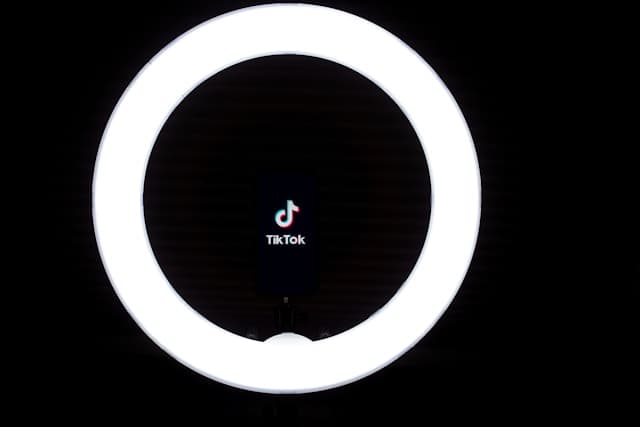
The Science of Viral Social Media Posts

Table of Contents
Introduction
The Science of Viral Social Media Posts explores the underlying principles and psychological factors that contribute to the widespread sharing and engagement of content on social media platforms. As social media has become an integral part of daily life, understanding what makes certain posts go viral is crucial for marketers, content creators, and anyone aiming to harness the power of digital communication. This topic is notable not only for its impact on marketing strategies but also for its implications on social behavior and community engagement in the digital age. Research indicates that successful viral posts often evoke strong emotional responses, utilize relatable content, and leverage engaging formats such as videos and memes.
Factors such as emotional triggers, social connection, and the fear of missing out (FOMO) significantly influence sharing behavior, driving users to amplify content within their networks. Additionally, the role of social media algorithms cannot be overlooked, as these systems prioritize and curate content based on user interactions, ultimately determining which posts gain visibility and traction among audiences. Prominent controversies surrounding viral social media content include concerns about misinformation, manipulation, and ethical implications of exploiting emotional responses for marketing gain. The ability of social media to facilitate rapid dissemination of both positive and negative content raises questions about the responsibilities of content creators and platforms alike. Moreover, the evolving landscape of social media, influenced by emerging technologies like artificial intelligence, continues to shape the dynamics of viral content creation and sharing.
In summary, the study of viral social media posts combines insights from psychology, marketing, and technology to inform strategies that resonate with audiences while also highlighting the potential risks and ethical considerations inherent in digital communication. As platforms evolve, understanding these elements will be vital for navigating the complexities of content virality and fostering meaningful online interactions.
Historical Context

The evolution of social media has significantly impacted the way communities are formed and how information is disseminated. In the digital age, there has been a pervasive concern regarding the "loss" of traditional community ties, with critics arguing that social media has weakened interpersonal connections. This sentiment reflects a form of moral panic that has appeared in previous eras, where emerging technologies were similarly blamed for diminishing social cohesion. Such nostalgic thinking romanticizes the past, overlooking the challenges inherent in close-knit communities, which often perpetuated social injustices and groupthink dynamics (Hampton & Wellman, 2018).
Historically, communities were largely defined by geographical boundaries, which limited diversity and inclusivity. Traditional sociological research emphasized the importance of place in community formation, leading to a focus on markers such as nationality (Taylor, 2008). However, social media has revolutionized this paradigm, allowing for the creation of imagined communities that transcend physical locations. As a result, online spaces have become arenas for diverse groups to connect over shared interests, experiences, and grievances, thus altering the traditional concept of community.
The role of storytelling in engaging communities has been integral since ancient times. The structure of a compelling narrative—characterized by a clear beginning, middle, and end—has long served as a means to engage audiences and foster connections. This foundational principle remains relevant in the context of social media, where relatability and emotional resonance enhance shareability and engagement with content (Berger, 2013). The advent of social media also played a critical role in political mobilization, particularly evident during events like the Arab Spring. Platforms such as Facebook and Twitter facilitated unprecedented levels of political discourse and organization among activists, enabling rapid and expansive mobilization that had not been possible before (Hussain & Howard, 2016).
This underscores the dual-edged nature of social media: while it can enhance connectivity and community-building, it also raises questions about the quality and depth of those connections compared to traditional forms of community engagement. As we look to the future, the integration of new technologies such as artificial intelligence (AI) and augmented reality (AR) is expected to further shape the social media landscape, enhancing user experiences and community interactions. Understanding the historical context of social media's impact on community dynamics is crucial for navigating the evolving digital environment and harnessing the power of these platforms effectively (2024 Trends).
Historical Impact: The transformation from traditional to digital communities has fundamentally changed how humans connect, share, and mobilize.
The Psychology of Sharing

Emotional Triggers
Emotions play a critical role in the decision to share content. Content that evokes strong emotions—whether positive (such as joy or inspiration) or negative (like fear or anger)—is more likely to be shared. Positive emotions encourage engagement, as users tend to share uplifting content that resonates with their feelings, while negative emotions can create urgency, prompting users to share in order to provoke action or awareness. According to studies, emotionally charged content not only captures attention but also enhances memory retention, making it more likely to be shared.
FOMO Impact
The fear of missing out is another powerful motivator for sharing on social media. Users are often compelled to share trendy or culturally relevant content to remain part of the ongoing conversations and to showcase their awareness of current events. This behavior can amplify the visibility of certain content, making it more viral.
Altruistic Sharing
Many people share content with altruistic motives, aiming to contribute positively to the community. This could involve spreading awareness about social issues, sharing informative articles, or providing uplifting content that can inspire others. This form of sharing satisfies an intrinsic desire for social contribution, allowing individuals to feel like they are making a difference in the lives of others.
Brand Identity
Sharing is also a way for individuals to define and communicate their per sonal brand. Many users choose to share content that reflects their values and interests, helping them curate an online identity that resonates with their beliefs. This desire to present oneself authentically is a significant factor in the sharing behavior; for instance, studies indicate that a large percentage of users share content to express their identity and connect with like-minded individuals.
Platform Algorithms

Algorithm Basics
Algorithms serve as a crucial filtering system that prevents users from being overwhelmed by the vast amount of content generated daily. Without these algorithms, users would have to navigate through a flood of posts, making it difficult to find relevant information. By analyzing user interactions and preferences, algorithms filter out noise, helping users discover content that aligns with their interests more effectively.
Core Mechanics
The functionality of social media algorithms can vary significantly between platforms; however, several core principles are consistently employed across most platforms:
- Data Collection: Social media platforms gather extensive data on user interactions, including likes, comments, shares, and the amount of time spent on different types of content.
- User Profiling: This data is used to create detailed user profiles that reflect preferences, interests, and behavior patterns, allowing the algorithm to tailor content to individual users.
- Relevance and Engagement: Algorithms prioritize content that is deemed relevant based on past user interactions. Posts that garner higher engagement—likes, comments, and shares—are often shown more prominently in feeds.
- Recency: Fresh content is typically favored over older posts to ensure that users receive timely updates, which is particularly important on platforms like Twitter where current events are a primary focus.
- Content Type: Algorithms may also take into account the type of content (e.g., videos, images, text) to deliver a more engaging user experience.
Platform Specifics
Different platforms employ distinct algorithms that reflect their unique focus and user interactions:
- Facebook: Facebook's algorithm emphasizes user engagement metrics, achieving up to 75% higher reach for active discussions
- Instagram: Instagram's algorithm prioritizes posts with high initial engagement, showing 40% more reach in the first hour
- Twitter: Twitter's algorithm highlights trending topics, with viral tweets gaining 80% of their reach in the first four hours , Unlock the secrets of the X algorithm and maximize your post reach !
- LinkedIn: LinkedIn's algorithm favors professional content, with text-based posts receiving 3x more engagement
Understanding these algorithms and how they function is essential for social media marketers aiming to enhance their visibility and engagement on various platforms. Staying updated on algorithm changes and trends can significantly impact content strategy and overall performance on social media.
Content Strategy

Audience Analysis
To create content that resonates, it is crucial to know your audience's interests and preferences. Engaging with your audience through social listening tools can provide insights into current trends, helping you tailor content that appeals to them directly. Recognizing the emotional triggers that drive shareability—such as curiosity, excitement, and social proof—can also guide your content creation.
Content Creation
Crafting compelling headlines and visuals is essential for capturing attention and increasing click-through rates. Effective emotional triggers include curiosity, urgency, and humor. Additionally, accompanying your content with eye-catching visuals can enhance its appeal, as images can convey complex ideas more effectively than text alone and evoke emotional reactions.
Publishing Strategy
Effective timing is essential for maximizing the reach of your content. Identifying peak publishing hours and sharing on multiple social media platforms can help your content gain traction quickly. A robust promotional strategy, combined with engaging content, will increase the chances of virality.
Performance Tracking
Using analytics tools to track engagement and performance can inform future content strategies. By understanding what types of content perform well, you can refine your approach and focus on creating more of what resonates with your audience. Continual assessment and adaptation are crucial to maintaining relevance in a rapidly changing digital landscape.
Case Studies
Platform Integration
Social media case studies serve as vital resources for understanding the dynamics of viral marketing and the effectiveness of various strategies employed by brands. They provide real-world examples that illustrate both successful and unsuccessful campaigns, allowing marketers to glean insights that can enhance their own efforts.
Content Solutions
Analyzing social media case studies allows marketers to learn from previous campaigns, identifying what strategies yielded positive results and which did not. This understanding helps in crafting more effective social media marketing plans. Rather than relying solely on theoretical knowledge, case studies bridge the gap between theory and practice by showcasing real-life applications of social media strategies.
Analytics Impact
To evaluate the success of a social media campaign, key metrics are often analyzed. These include engagement rates, reach, click-through rates, conversion rates, and return on investment (ROI). Each metric provides valuable insights into the campaign's performance, enabling brands to assess their effectiveness and refine their approaches for future initiatives. Metrics serve not only as benchmarks for success but also as indicators of areas that may require improvement.
Success Metrics
A well-structured social media case study typically includes several components:
- Introduction: An overview of the campaign, including the brand and platforms used.
- Objectives: A clear definition of the campaign's goals, such as brand awareness or sales enhancement.
- Strategy: An explanation of the tactics employed, such as content creation and influencer partnerships.
- Implementation: Details on how the strategy was executed, including timelines and challenges faced.
- Metrics Analyzed: A presentation of the key performance indicators assessed.
- Results: An analysis of the campaign's outcomes and whether it met its objectives.
- Key Takeaways: Insights gained from the campaign and recommendations for future strategies.
Several viral marketing campaigns exemplify effective strategies that can inspire future efforts. For instance, the ALS Ice Bucket Challenge harnessed social good to engage audiences and significantly increased donations for research. Similarly, Old Spice's "The Man Your Man Could Smell Like" campaign successfully revitalized the brand's image through humor and creative storytelling, connecting authentically with a younger demographic. These case studies illustrate that successful viral campaigns often share common characteristics, such as emotional resonance, creativity, and a genuine connection with the audience. By examining these successful strategies, brands can formulate their own effective social media campaigns that resonate deeply with their target audience.
Future Trends
Video Evolution
Short-form video continues its dominance as a primary driver of viral trends. Platforms like TikTok, Instagram Reels, and YouTube Shorts have popularized this format, making it a powerful tool for reaching vast audiences quickly. The concise and engaging nature of short videos makes them highly shareable, contributing to their viral potential.
AI Integration
Artificial intelligence is playing an increasingly important role in content creation, including the generation of viral content. AI tools can assist with various aspects of the creative process, from generating ideas and writing scripts to creating visuals and editing videos. This can streamline content production, allowing creators to produce high-quality content more efficiently. Furthermore, AI can analyze trends and user preferences to identify what type of content is likely to resonate with audiences, helping creators optimize their content for virality.
Virtual Reality
The metaverse and other immersive technologies are poised to transform social media interactions, including the way viral content is experienced. Virtual and augmented reality experiences can create highly engaging and memorable moments that are more likely to be shared. Imagine interactive brand experiences, virtual events, or augmented reality filters that allow users to participate in viral trends in a more immersive way. The metaverse offers new possibilities for viral content creation, blurring the lines between the physical and digital worlds.
Community Focus
Community plays a crucial role in the spread of viral content. Content that resonates with a specific community is more likely to be shared within that group, amplifying its reach. Creators who focus on building strong communities around their content can significantly increase its viral potential. This involves engaging with followers, fostering discussions, and creating a sense of belonging.
Ethical Framework

Privacy Concerns
As the power of viral social media grows, so do the ethical considerations surrounding its use. Concerns about misinformation, manipulation, and the exploitation of emotions are becoming increasingly important. Creators and platforms have a responsibility to ensure that viral content is created and shared ethically, respecting user privacy and avoiding harmful or misleading information.
Content Integrity
The future of viral social media will likely involve greater emphasis on responsible virality and ethical content creation.
Platform Responsibility
Creators and platforms have a responsibility to ensure that viral content is created and shared ethically, respecting user privacy and avoiding harmful or misleading information.
Conclusion
The science of viral social media posts is a complex and multifaceted field, influenced by psychology, technology, and social dynamics. Understanding the factors that contribute to virality is essential for marketers, content creators, and anyone seeking to harness the power of social media. By understanding the psychology of sharing, the characteristics of viral posts, the role of algorithms, and the evolving trends in social media, creators can increase their chances of producing content that resonates with audiences and achieves viral status. However, it's crucial to remember the ethical considerations and the importance of responsible virality. As social media continues to evolve, staying informed about these trends and adapting strategies accordingly will be key to success in the ever-changing world of viral content.
Want to craft viral social media posts that captivate audiences? Leverage ReplyPilot to optimize engagement, personalize interactions, and amplify your content's reach with AI-driven efficiency. Start creating viral-worthy posts today!
Continue reading
More posts about social media engagement and social media marketing and trends





Social Connection
At the core of human interaction lies the fundamental need for social connection. Sharing allows individuals to express themselves and communicate their identities while strengthening bonds with others. When someone shares personal experiences or interesting articles, it not only serves to connect with friends and followers but also reinforces their social identity. The act of sharing encourages engagement through likes, comments, and further sharing, creating a feedback loop that enhances feelings of belonging.